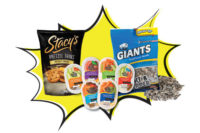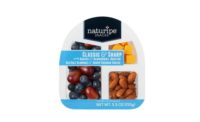Packaging challenges from two separate companies converged to drive Toray to develop a new portfolio of flexible packaging innovations — Torayfan Over-the-Mountain BOPP films.
In the first case, a customer was dealing with evolving global distribution channels and extended shelf-life requirements. Simultaneously, another snack food manufacturer was frustrated with a domestic shipping issue. Gas-flushed, heat-sealed snack food pouches transported from one geographic region of the country to another were arriving at their destination burst or deflated. At first glance, the common denominators for both customers’ challenges were a need for improved barrier durability and a means of safe transport over long distances.
Toray’s R&D team hypothesized that applications that are transported by overland and air routes at high and changing altitudes may require flexible packaging with improved heat-seal strengths and hermetic properties. For example, in Colorado, the Eisenhower Tunnel of I-70, which passes through the Rocky Mountains, has a maximum elevation of 11,158 feet. Worldwide, typical passenger aircraft cabins are pressurized to an equivalent effective altitude of 6,000 to 8,000 feet.
In both situations, many anecdotal accounts tell of products packaged at sea level that burst open when they were transported to areas of higher elevations, owing to the expansion of gases within the package caused by the reduced atmospheric pressure. For the CPG company or the consumer, a package that has burst or somewhat deflated raises concerns about product safety and integrity. The brand owner must also deal with the expense of lost merchandise and damage to the brand image.
One potential solution for addressing this issue is the use of a thicker, three-ply lamination. The drawbacks are cost and a missed opportunity for lightweighting. Another countermeasure is to control the amount of headspace — the volume of air within the bag — and compensate for the expansion at higher elevations so that less stress occurs on the sealed areas. Unfortunately, that means that at sea level the bag will look deflated. A flattened bag does not indicate that the product is not fresh or is poorly packaged, but it can convey that impression. In addition, the reduced amount of air in the bags may provide less protection for the snack food product, as there is less cushioning and thus the potential for more breakage.
Finding the Right Combination
An extensive examination of the improvement of hermetic-seal qualities of selected BOPP-based laminations in VFFS pouch applications revealed that some film designs and sealant-resin choices can significantly improve the seal integrity and hermeticity of pouches and pillow packs, while performing well in “over-the-mountain” (OTM) conditions. Such film designs provide significantly improved hermetic-seal properties at various elevations above sea level to help retain product freshness and quality, as well as more-robust seals that prevent bursting or rupture of such pouches and the subsequent loss of contents or even a compromised package appearance.
Controlled testing also demonstrated that hermetic seals may provide an excellent seal through any food residue. The sealant closes channel leaks in challenging seal areas, thus preventing oxygen and moisture from getting into the package and degrading product freshness. The high-performance sealant also may help prevent any necessary oils in the packaged product from leaking out through the seal areas. Oils that leak can leave a greasy texture on the package surface and stain it and any secondary packaging, compromising the consumer’s experience and tarnishing a brand’s reputation.
These new OTM films offer important sustainability benefits, too. They are thin, solvent-free, and robust enough to allow a switch from a traditional three-ply lamination to a two-ply structure. Less material enables lightweighting, which supports sustainability, and produces less waste. Simplifying the converting process promotes production efficiencies and enables cost savings.
The films are also compatible with standard HFFS equipment that runs heat-sealable BOPP film. As with VFFS equipment, no changes in converting set up are necessary. The films are available in transparent, metallized, and white versions in a variety of barrier levels.
Necessity drove the OTM innovation — a proprietary hermetic-sealant technology combined with a patented modified polypropylene core film layer technology that work synergistically to provide superior seal performance. Today robust, thin OTM films are helping CPG companies with global reach to achieve their distribution-channel goals and shelf-life requirements and small and regional snack food manufacturers in the U.S. are reaching new customers and growing business.
Toray Plastics (America) Inc.






